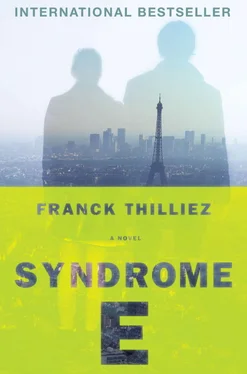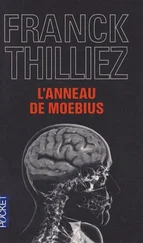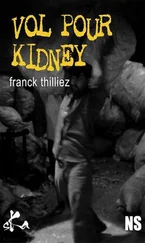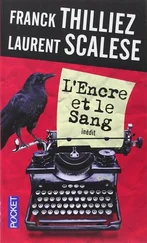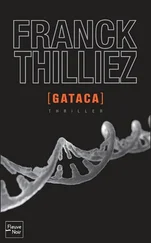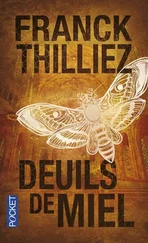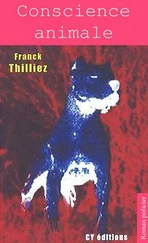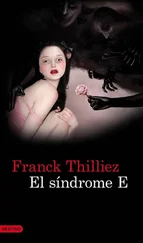“Yes. But he got caught in his own trap. Mohamed Abane, a particularly violent individual, went out of control and dragged four other men down with him. They were probably massacred before Chastel could even intervene. At that point, the colonel immediately took charge of the situation. He, his henchman Manoeuvre, and our brain thief got to work: opening the skulls, removing the eyes, disposing of the remains.”
Sharko stood up and waved the list of SIGN attendees. He was on the brink of nausea.
“Manoeuvre and Chastel were only second-stringers. We need the real killer. The one who mutilated the Egyptian girls. The one who, for all these years, has probably been traveling from country to country sawing open skulls. The architect. He’s here, right in front of us, on this list of names. Burma dates back twenty-five years. If he went there after the massacre, our killer must be at least forty-five today.”
Sharko closed up like an oyster, delved into his list, and began crossing out names. Still shaken, Lucie took the opportunity to log on to the hotel’s Wi-Fi. She googled the name “Peter Jameson,” which didn’t yield anything relevant. She then entered “James Peterson.” A number of results came up.
“Franck? You should come see this… A James Peterson matches our criteria.”
As Sharko didn’t hear her, she had to say it again. He raised his eyes toward her and waved his list.
“I should be able to eliminate about half.”
He came toward her. Lucie pointed to the screen. She had clicked on a Wikipedia article about the man. The photo showed a thin, slight fellow, with angular features and intransigent eyes.
The two cops read silently. James Peterson… Parents emigrated from New York to France. Born in Paris in 1923. A remarkably gifted child who started university studies at age fifteen. Associate professor of physiology, before concentrating on the study of the nervous system when he wasn’t yet twenty. Then moved to the United States, to Yale, where he specialized in research into direct stimulation of the brain using electrical and chemical techniques. This was the subject of his only book, Brain Conditioning and Freedom of Mind , published in 1952. In 1953, Peterson inexplicably abandoned the scientific field and was never heard from again.
Lucie tried other searches, but they didn’t tell her anything further. Peterson had simply vanished. But the cops now knew where he’d gone after 1953: Mont Providence, under the hybrid identity of Peter Jameson. He had been recruited by the CIA, like the others, to perform experiments on children. For now, the trail dead-ended there. The cops awaited a call from Pierre Monette for more detailed information.
Lucie clicked on the link for the book James Peterson had written. The cover image appeared, and the two cops stared at it in amazement.
It showed an enormous bull, nose to nose with a small man wearing a blond mustache; his hands were behind his back and he was smiling. James Peterson himself.
“The bull facing off against the human, like in Lacombe’s film,” said Sharko. “What is this goddamn book about, anyway?”
With a few clicks, Lucie found a descriptive blurb of the work. She read aloud:
“Progress in physiology is such that, today, it is possible to explore the brain, to inhibit or excite aggression, and to modify maternal or sexual behavior. The tyrannical chief of a monkey colony yields to its subordinates, if one manages to stimulate a particular area of its encephalon. This direct access to the brain, through the miracle of astounding physical techniques, constitutes a more decisive phase in the history of man than the conquest of the atom.”
Sharko sat up. He realized that the solution to their puzzle was buried in the pages of that book. He put on his jacket, which he’d left at the foot of the bed, and headed for the door.
“Come on. While waiting for the cop to call, we’re going to see what horrors that book really contains.”
James Peterson’s book was still available online, but it wasn’t in stock at the bookstores Sharko and Lucie tried. Given the title and description, a slightly savvier bookseller recommended asking at the University of Montreal Medical School—the third largest in North America—and more specifically, the Center for Neurological Sciences. Standing behind his advice, he managed to reach a professor named Jean Basso. He handed the receiver to Sharko, and the two men set an appointment for a short while later, enough time for Basso to refresh his memory of the book that he indeed owned.
In the taxi, Lucie and Sharko didn’t talk much, so close did they feel to the unspeakable mire. They were brushing up against a darkness that had engulfed politics, religion, and science, and that had insinuated itself into the recesses of sick minds. Lucie thought of her family, her daughters, whom she tried to raise in a state of innocence in a world she still wanted to believe existed. The faces of Clara and Juliette again floated above those of Alice and Lydia, little girls who hadn’t asked for anything and who had been given no chance. Today more than ever, Lucie felt powerless and terribly fallible.
They arrived at their destination.
The university rose like a monster of concrete and glass, between the western slope of Mount Royal and the infinite rows of student housing. But more impressive still was the great emptiness that reigned in midsummer. More than fifty thousand students absent, streets deserted, dining halls, gyms, libraries, and shops closed. It was like a ghost town, where all that remained were a few researchers and some maintenance and facilities staff.
Lucie and Sharko stopped in front of the beautifully designed science complex and began questioning the first people they saw. Eventually they obtained the name of a building: Paul Desmarais.
The structure was located at the other end of campus. More than half a mile away, after following the underground passageways that linked the various centers, they were ushered into an office and introduced to Professor Jean Basso, the head of what was now called the Central Nervous System Research Group. The man was a good fifty years old and affected an Einstein-like air.
Sharko explained their interest in Peterson’s book, Brain Conditioning and Freedom of Mind .
“I know it well,” Basso replied. “Who could not know his work on the brain? A remarkable scientist, who interrupted his research much too soon.”
“Would you know why?”
“No.”
Sharko was almost tempted to say, We do. He conducted experiments not very far from here, on children used as guinea pigs for a secret CIA program, along with an insane filmmaker named Jacques Lacombe.
“And do you have any idea what became of him?”
“None at all. Only the man’s scientific life interested me. As for his private life…”
He waved a green-and-black book of about four hundred pages, its cover showing a man staring down a bull. The copy had been well used, its pages yellowed and dog-eared.
“I’ll try to be brief and explain this in layman’s terms. You have to realize that for scientists of the time, what happened inside our heads was, for all intents and purposes, like a big black box. Peterson, with true genius, focused on something fundamental to the neurosciences: What took place between sensory intake—the eye seeing a red light—and its behavioral outcome—the foot stepping on the brake? What were the mechanisms that clicked into place inside that black box, so that on the basis of a sound or a smell, a movement or behavior should result? The fundamental principle that guided Peterson’s work was the tabula rasa, which posits that the mind of a newborn is a blank slate, on which experience writes its messages and thereby develops the various areas of the brain, which are related to certain senses. Basically, the origin of memories, emotional reactions, physical aptitude, of the words and ideas that constitute an individual are initially found outside that individual. Peterson conducted a slew of edifying experiments on animals to support his theories. For example, monkeys, which he deprived of several of their senses from birth. Cats, which he stimulated visually without respite. In the case of deprivation, the brain didn’t grow, and in that of sensory overload, it reached a weight higher than the norm. Which proved that the structure of the brain developed according to sensory experience. In this book, we can sense Peterson’s fascination with how the senses interact with the brain.”
Читать дальше
